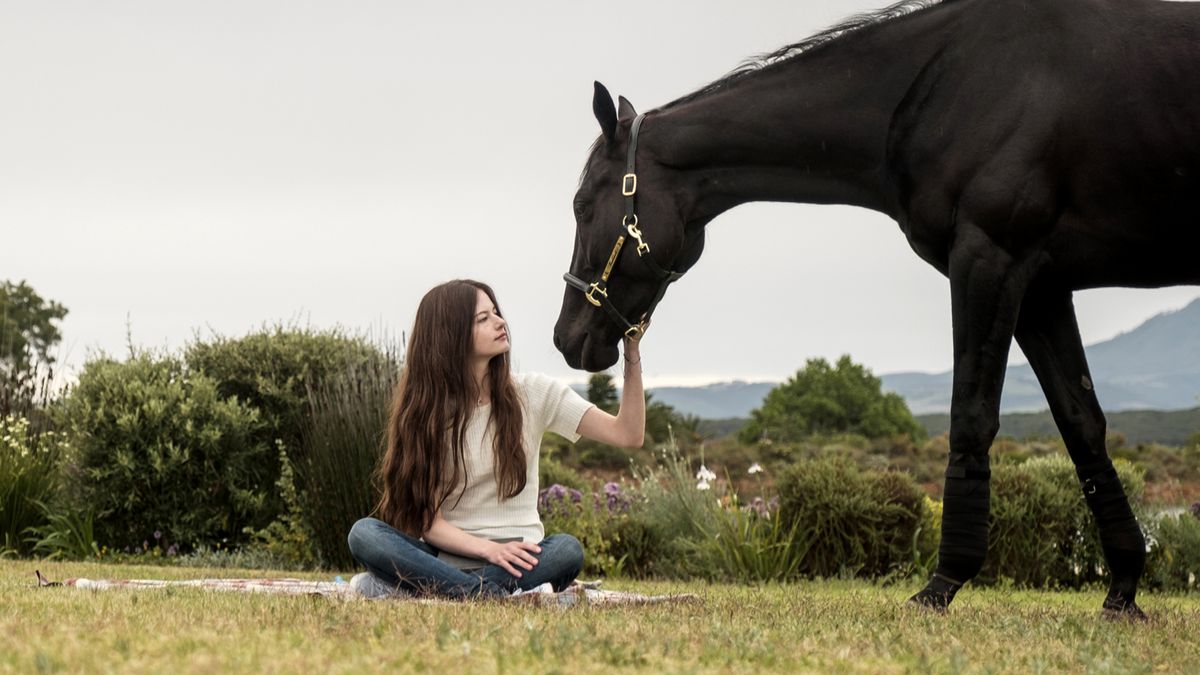Table of Contents Show
For many self-proclaimed horse girls, reading Anna Sewall’s Black Beauty planted a love of horses deep within. With Disney’s new adaptation released to streaming, it is sure to inspire a new generation of horse lovers. However, do the timeless truths that Sewall instilled in her novel translate to Disney’s version?
A star-studded cast including Mackenzie Foy, Iain Glen, Kate Winslet, and more bring quality acting to the story, and Beauty’s journey is just as heartfelt as in the book. However, beyond the gender swaps and modernization of the story, there is a certain quality lacking.
Black Beauty: The Story
The film starts with a now female Black Beauty narrating her birth as a wild mustang in the west. She is quickly rounded up by the Bureau Of Land Management (BLM) and sold to horse trainer John Manly. He brings Beauty to a horse sanctuary called Birtwick, where she meets Manly’s troubled niece Jo Green. Jo has recently lost her parents but finds a connection with Beauty that develops throughout the film.
After a fire at the sanctuary forces Jo and Beauty to a different stable, Beauty is separated from Jo and works many different jobs. Beauty does her duty with a “spirit” credited to her mustang background from ranger mount to farm horse to carriage horse in New York. As she ages, Beauty ends up at a carriage business in the city that treats the horses just well enough to keep them going. This is where Jo finally finds the worn-out Beauty and brings her back to a restored Birtwick where they live happily ever after.
Black Beauty Stumbles
Finding the balance between telling a story that appeals to many as well as honoring the original and appeasing horse lovers can be hard. While Sewall’s tale’s basic plot points are covered, the story can feel cluttered and a little forced. The drastically different careers that Beauty leads demonstrate the long and significant lives that horses often lead.
However, the variation of jobs Beauty carries out does not consider the many years of training that each of these equestrian sports often takes. Trying to find modern ways to hit the original book’s beats takes us on a confusing journey that is loosely tied together with Beauty’s “heart” and Jo’s desire to find her again.
Technical Difficulties
Most horse films are filled with their share of goofs that non-equestrians would never notice. Beauty is allegedly a mustang from the west. However, mustangs usually have short stature and a distinctive look. The horses portraying Beauty in the film are clearly not mustangs. Their tall and lankier stature breaks the fiction a bit as so much of the theme is centered around Beauty’s identity as a mustang with an unbreakable spirit.
As mentioned, the different jobs Beauty takes take years of training and are often carried out by different breeds. While mustangs are often used in western riding, dressage and hunter jumpers rarely see a mustang in the ring. Beauty’s mustang heritage is best suited to her adventures with Terry in the wilds. When Beauty is brought to New York as a carriage horse, the skillset changes again, and somehow she is conditioned and comfortable with pulling a cart. Most horses are not trained to both ride and drive. Both take a different set of muscles and abilities, just as a hurdler and football player might both be fit but have different strengths.
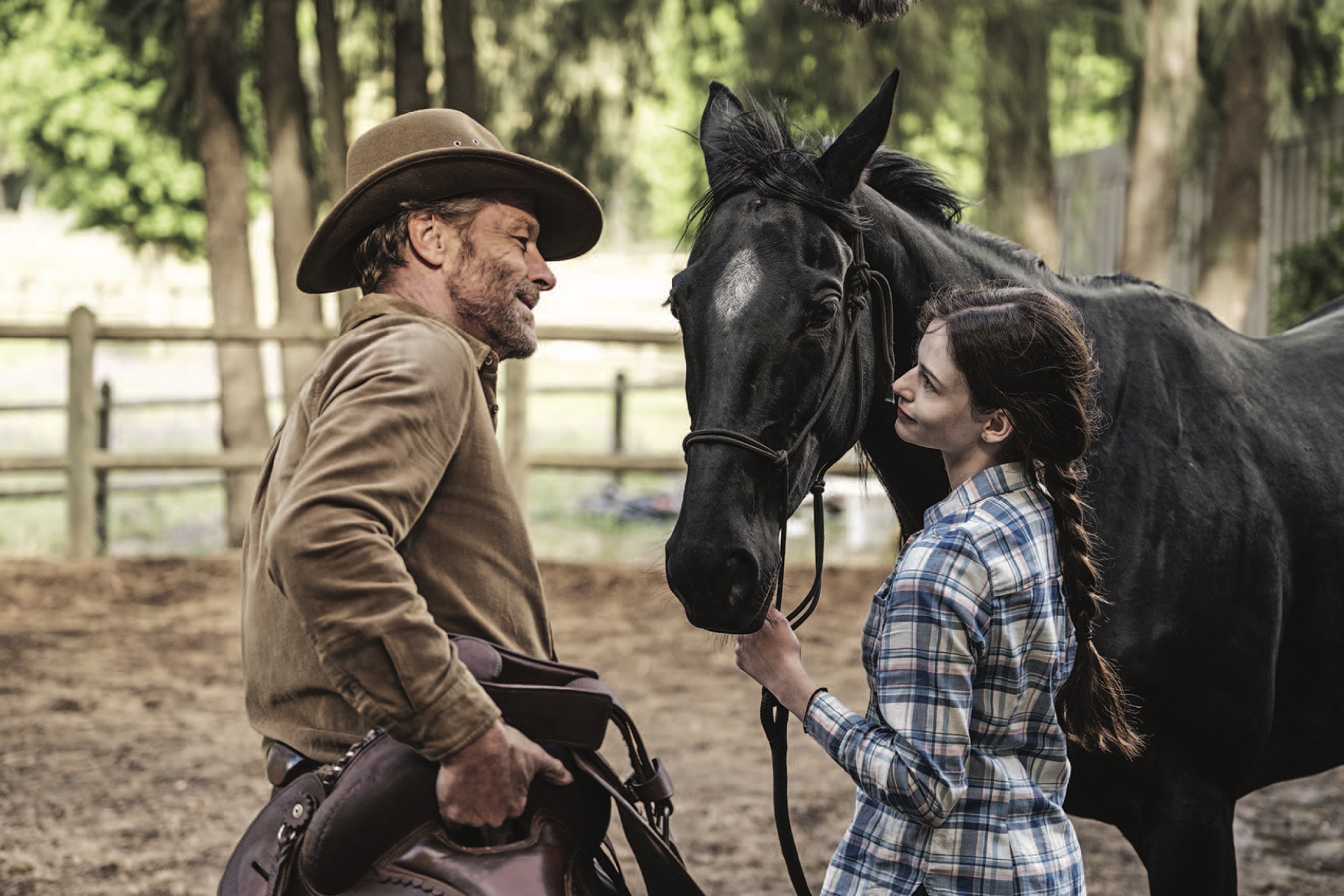
In the book, Beauty is bred in captivity and learns to ride and drive from his breeder, Farmer Grey. This early training serves as a believable foundation for Beauty’s future endeavors. Beauty carries out duties as a family, riding, carriage, and cab-horse. Unlike today, most horses in 1877 were used for multiple purposes. However, these jobs were less niche, and horses were not required to fit into such specific criteria as they often are today. This makes it difficult to translate Beauty’s winding career path from Sewall’s classic to today.
When Jo and Beauty go to the Winthrop stables, Mrs. Winthop’s declaration that Beauty is not a thoroughbred like everyone else’s is a little misleading. Most dressage horses (the style of riding Georgina was practicing) and even hunter/jumpers are warmbloods or warmblood crosses. Thoroughbreds are usually less expensive and less sought after than these breeds. However, mustangs are even lower on the scale, although they are very teachable and usually athletic. Though not detrimental to the story, these technical goofs bring a sense of disbelief, especially to avid equestrians.
Jo Green
Though a girl with a troubled past, Jo is portrayed as a horse lover and hardworking groom who idolizes her horse. This is great; however, in Anna Sewall’s classic, the young groom — Joe Green — who eventually helps retire Beauty is young and naive when we first meet him. He is the one whose mistake makes Beauty very sick after a hard ride, and Beauty initially is bitter towards him. However, Joe Green’s part in Beauty’s life does not end there. He learns from his mistake, which shapes his character into the great horse owner we find in the end.
In the Disney film, Jo has a sour attitude at the beginning of the film. However, she is never shown making horse care mistakes that most beginners make. This lack of reliability takes away from the impact and character development that could have been had. Even if one overlooks the technical shortcomings that an equestrian might notice, core areas shift the tale from great to watered-down without including the fundamental message that people can make mistakes. And sometimes horses suffer because of them. However, if one tries their best to learn and grow from these shortcomings, the trusting, pure hearts of horses are rewarded. One does not have to be the perfect horse owner or lover; one must simply humbly learn from their mistakes and strive to teach others.
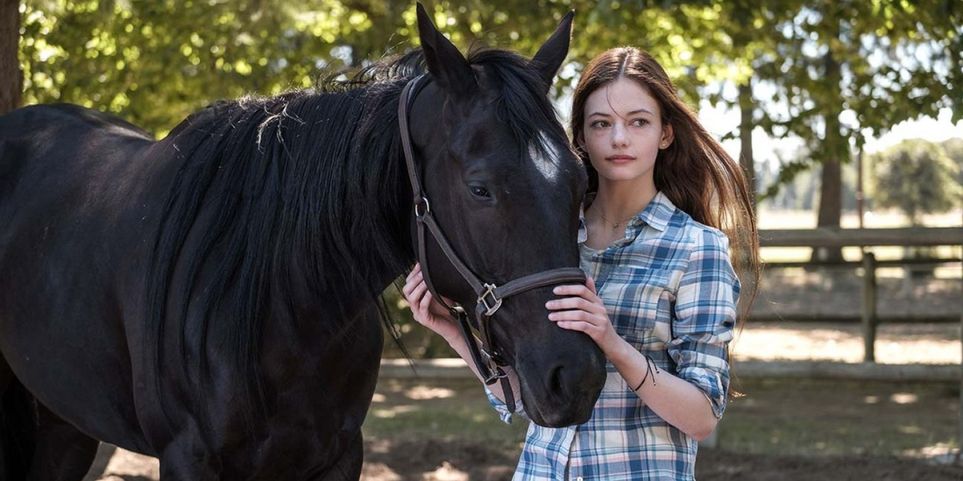
Even the romantic plot is almost imperceivable and lost in the film’s desire to hit every beat of the original in a modern way. Jo meets George Winthrop when she becomes Beauty’s groom after the fire. He is several years older than Jo, and their friendship seems more like brother and sister than romantic. George often protects Jo from his mother and sister’s wrath and helps Jo learn the ins and outs of an upper-class barn. One almost forgets about him, though, as we follow Beauty through her hardships.
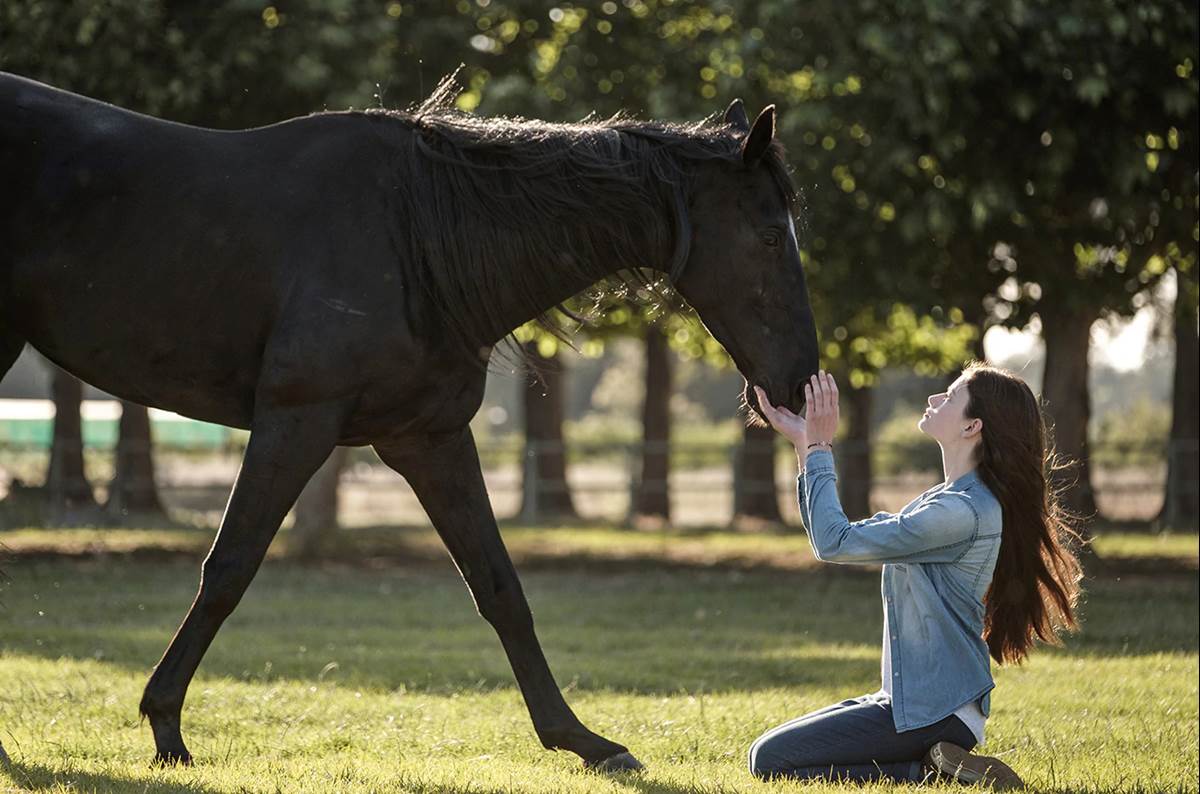
In the end, it turns out Jo has married George, and they run Birtwick together. It is unclear whether or not it is George’s money that has restored the sanctuary, but his relationship with Jo seems more platonic than anything. Including a romantic subplot could have enhanced the film by showing Jo’s growth from her rejection of Manly’s care to a young woman ready to receive and give love to humans and horses alike. However, the romance between her and George almost seems tacked to check off another “required” film beat. These differences, among a few others, make the reimagining more of a feel-good horse story. Without a strong core message, the film holds less punch than those who want more than just a story with horses in it. However, the film still has redeeming qualities that make it worth a casual watch.
A Good Horse Tale
There are good points to the film with good cinematography, music, and a clever adaptation to the modern-day. Director Ashley Avis has some horse experience and has adopted two wild mustangs. This mirroring of Beauty’s experience translates onto the screen and helps demonstrate how horses often have long and storied lives beyond what their owners might know. Jo’s ultimate desire to give horses a soft landing reflects Sewall’s initial purpose in writing Black Beauty.
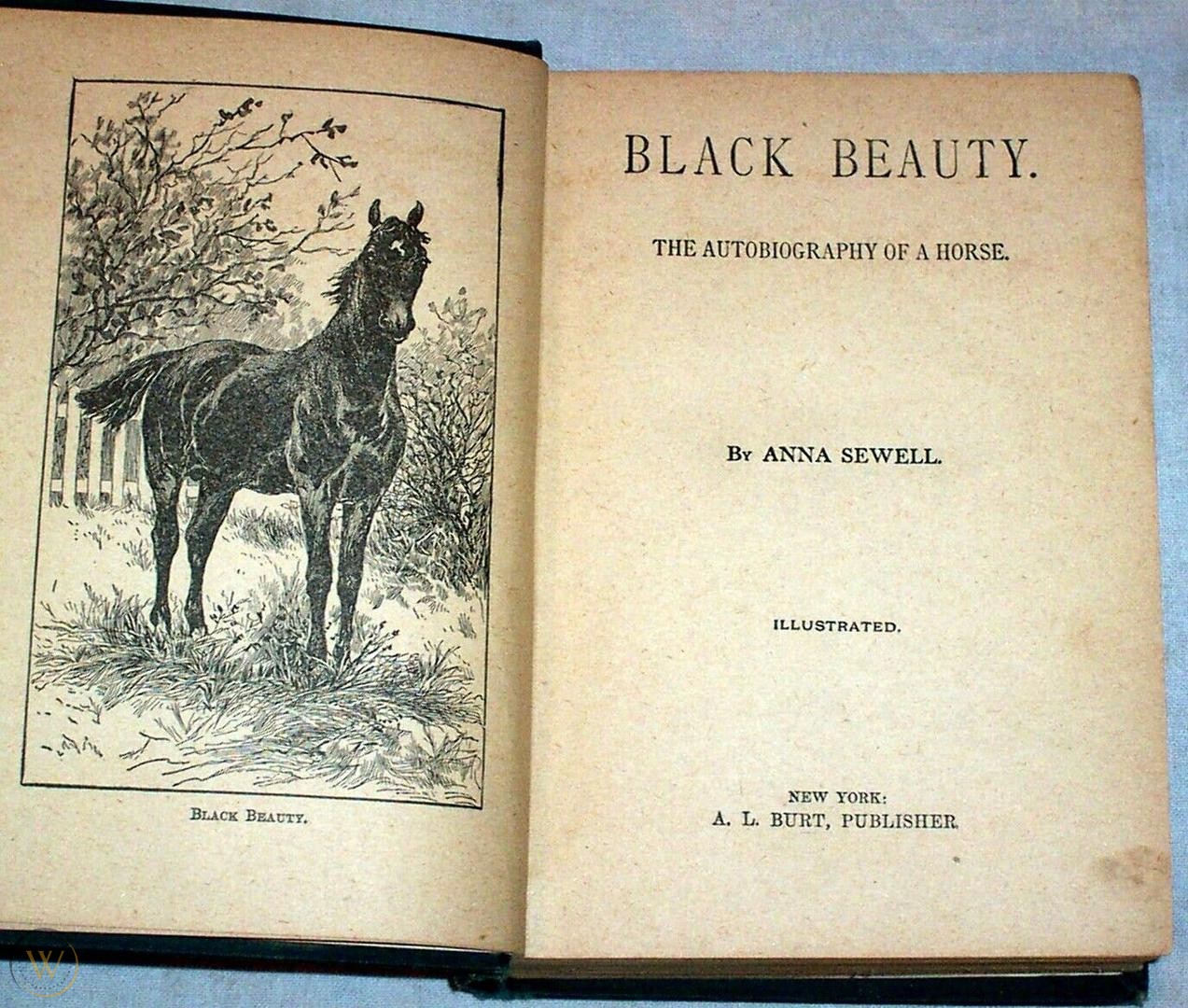
When Sewall’s work was published in 1877, horses were often still seen and treated as pieces of property or business tools to increase profits or provide entertainment. From his time as a farm horse to hunter to carriage horse to retirement, Beauty serves selfish owners, ignorant ones, and good horsemen. Some are kind but ignorant, some decent but profit-driven, some great, but mostly a good and bad mix. Sewall’s book tried to open the eyes of the public to how much abuse horses were enduring for the sake of man, even unintentionally.
This message is echoed in the reimagining. Jo’s efforts to save both Beauty and other horses in need from neglect and outright cruelty prove that there is still work to be done in this area. As a stand-alone horse film, the movie is inspiring, emotional, and uplifting. It fits neatly into the “horse girl” genre, and many a young horse lover will enjoy its spirit and abundant horses. The cinematography is well suited to the action and pays homage to the beauty of the equine. The message of genuine love for the animal and the depiction of a horse and rider’s bond are solid.
Black Beauty Reimagined
A book or tale reimagined on the big screen will probably never live up to everyone’s expectations. However, Black Beauty’s attempt to mirror the book’s storyline without emphasizing the core lessons creates a less striking retelling. Black Beauty could have beautifully woven the truths of the original with a modern setting for an inspirational film for animal lovers and movie viewers alike. The issues the film addresses are worth paying attention to.
However, the horse centric narrative creates a disconnect, almost pitting horses and humans against each other. Not without its good points, Black Beauty shows that sometimes focusing on your core message is better than attempting to hit every plot point or setting on an adaptation.
